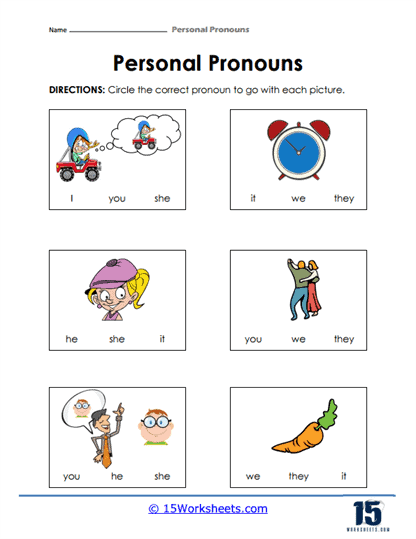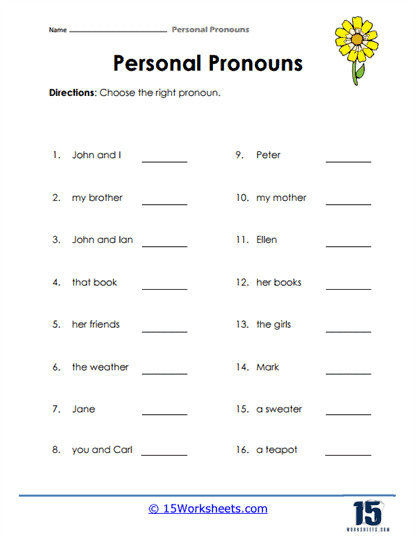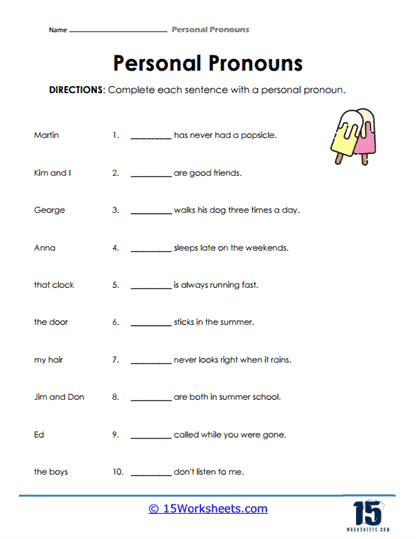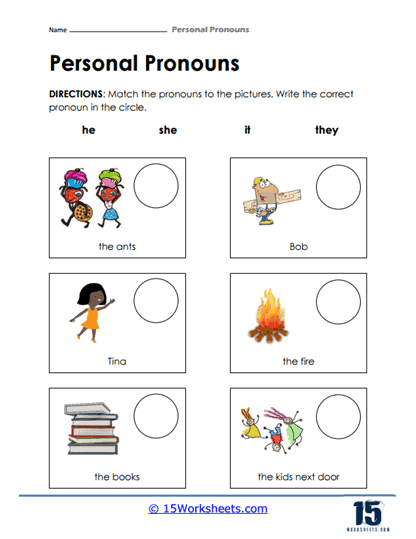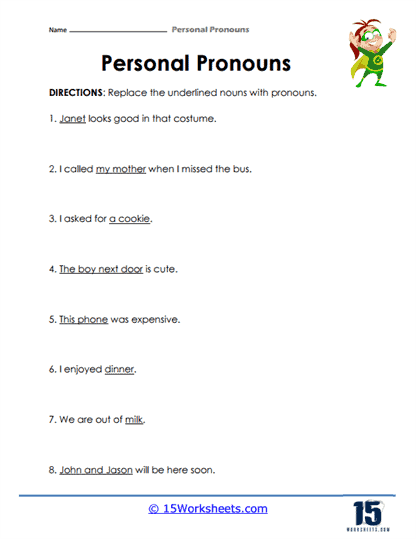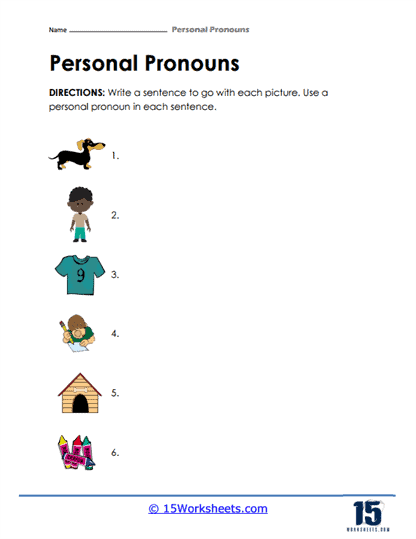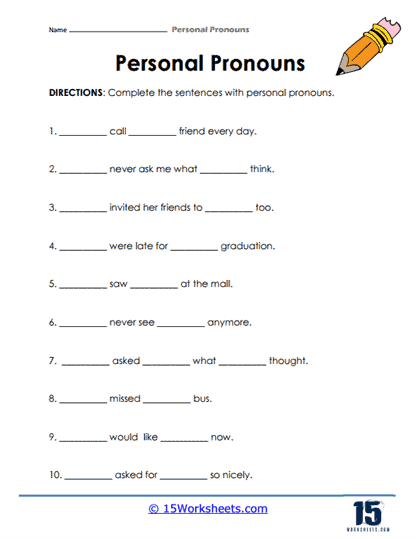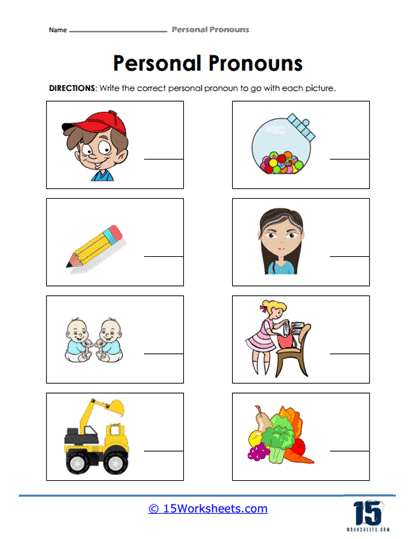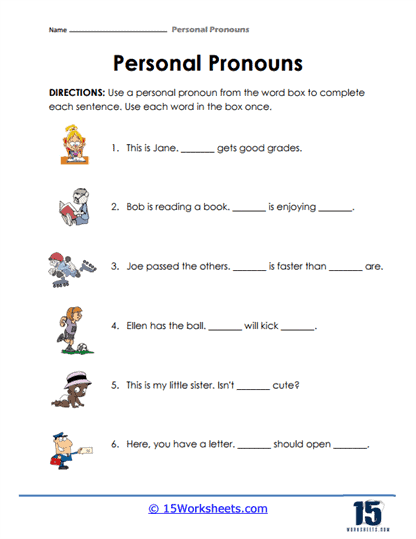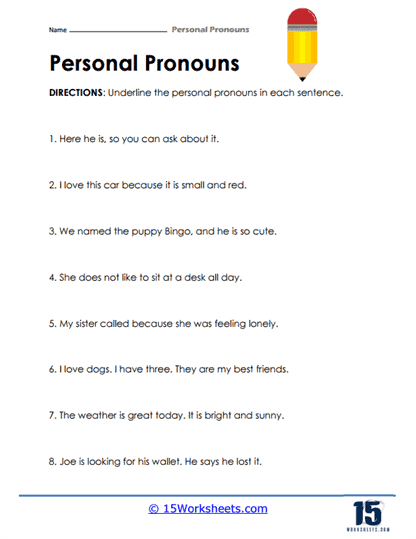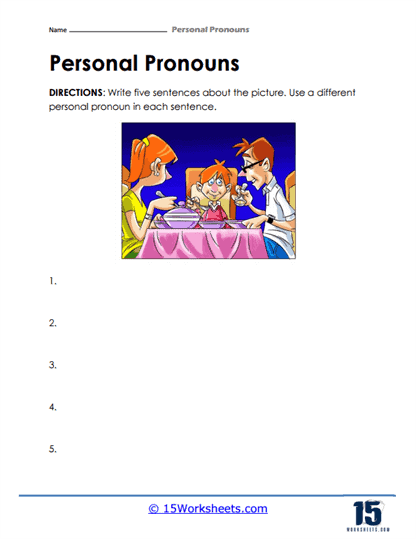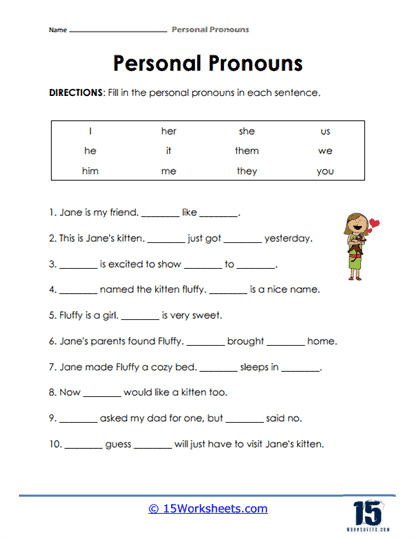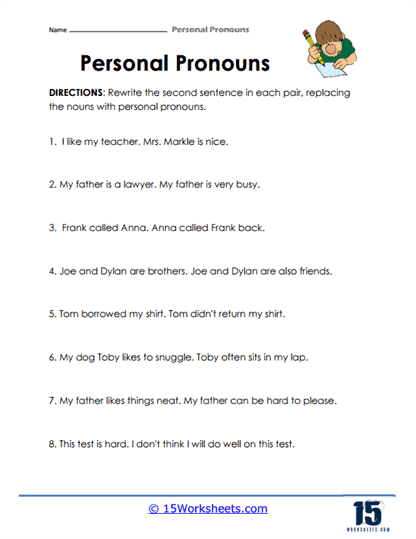Personal Pronouns Worksheets
All About These 15 Worksheets
These personal pronouns worksheets are educational resources designed to help students understand and use personal pronouns correctly in spoken and written communication. These worksheets include exercises and activities that involve identifying and using personal pronouns in sentences.
The exercises in these worksheets seek to aid students in distinguishing between different types of personal pronouns, such as first-person, second-person, and third-person pronouns. They also help students understand the proper use of subjective, objective, and possessive forms of pronouns.
These exercises involve replacing nouns in a sentence with appropriate pronouns, creating sentences using different pronouns, and identifying the personal pronouns in sentences. After completing these worksheets, students will be able to:
- Identify personal pronouns in sentences;
- Learn the correct usage of personal pronouns;
- Complete sentences by supplying it with the appropriate pronoun;
- And create their own sentences with personal pronouns.
These worksheets can be used in a variety of settings, including classrooms, homeschooling environments, and tutoring sessions. By using these worksheets on Personal Pronouns, teachers can help their students improve their understanding and use of personal pronouns, which can enhance their overall communication skills.
What are Personal Pronouns and why do they matter?
Personal pronouns are words used to replace a person’s name or to refer to them without using their name. They are called “personal” because they indicate the person speaking (first person), the person being spoken to (second person), or the person being spoken about (third person).
There are different types of personal pronouns:
- First-person pronouns – These refer to the person speaking. Examples include “I,” “me,” “we,” and “us.”
- Second-person pronouns – These refer to the person being spoken to. Examples include “you” and “your.”
- Third-person pronouns – These refer to the person being spoken about. Examples include “he,” “she,” “it,” “they,” and “them.”
Personal pronouns are important in communication as they help to avoid repetition and make language more concise and efficient. They also allow us to refer to people without using their names, which can be useful in certain contexts.


